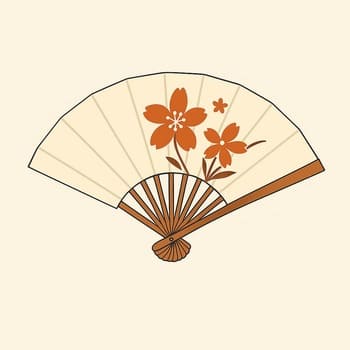You’ll spot them in Kyoto gift shops, tucked inside Ginza boutiques, or fluttering from the hands of summer festival goers — Japanese folding fans, or sensu, are everywhere once you start noticing. Light, elegant, and unmistakably Japanese, they make for a perfect souvenir that slips easily into a bag but carries centuries of culture. Whether you want to cool yourself in style or just bring home something that feels a little magical, a folding fan might just open up more than a breeze.

1. What Is a Sensu?
A sensu is a folding fan made of paper or fabric stretched over thin wooden or bamboo ribs, often with intricate designs. Unlike uchiwa (flat fans), sensu can be folded compactly, making them ideal for travel. Their origin dates back over a thousand years to the Heian period, where they were used not just to cool oneself, but to signal, dance, and even deliver secret messages in court.
Today, they’re used in traditional performing arts like kabuki and tea ceremony — but also casually, especially during Japan’s humid summers.
2. Types of Folding Fans You’ll Find
Japanese folding fans come in a surprising variety — from the classically refined to the delightfully quirky.
- Paper vs. Fabric: Paper fans are lightweight and often more affordable, while fabric fans tend to be more durable and elegant.
- Traditional Designs: Think cherry blossoms, cranes, waves, and seasonal motifs. These are great if you’re going for that timeless “I went to Japan” feel.
- Modern Takes: You’ll also find fans featuring pop culture characters, minimalist graphics, or even metallic accents.
- Mini or Display Fans: Some are made just for display — smaller, more decorative, and often sold in sets.
Whether you’re buying for daily use or as a keepsake, there’s a fan for every personality.
3. Where to Buy One
Looking for a fan that won’t just gather dust? Japan has no shortage of places to find the right one.
- Department Stores: Upscale options can be found in places like Mitsukoshi or Matsuya Ginza, often near the traditional crafts section.
- Souvenir Shops in Kyoto and Asakusa: These tourist-heavy spots are great for variety, from classic to novelty designs.
- Specialty Stores: Try dedicated shops like Kyoto’s Maiko no Yakata or Daiyasu, where craftsmanship takes center stage.
- Station or Airport Shops: For last-minute gifts, many train stations and airports carry decent-quality fans.
- Even Don Quijote or Loft: Yes, even these megastores sometimes stock surprisingly stylish fans, especially in summer.
No matter where you shop, take a moment to unfold a few and feel the difference — it’s not just about looks.
4. Pro Tips for Picking the Right Fan
Not all fans are created equal — here’s what to keep in mind when choosing one that won’t disappoint.
- Test the Opening Mechanism: Some fans open too stiffly or too loosely. A smooth, controlled motion is what you’re looking for.
- Consider the Materials: Bamboo ribs are standard, but check if the paper or fabric feels sturdy. Thin paper may tear with regular use.
- Mind the Motif: Designs often carry meaning — cranes for longevity, waves for resilience, plum blossoms for perseverance. A nice touch if you’re gifting it.
- Size Matters: Regular fans are around 8–9 inches long when folded. Mini fans are cute but not great for actual cooling.
- Think About Display: If it’s more for decoration, pick one with a matching stand or a pattern that pops when unfolded.
In short: pick a fan that feels right — in your hand, and in your story.
5. Final Thoughts
A Japanese folding fan isn’t just a way to beat the heat — it’s a small, beautiful slice of culture you can carry home.
Give it as a gift, use it at festivals, or display it in your room. However you use it, it brings a quiet kind of joy — the kind that unfolds slowly, just like the fan itself.
Because sometimes, the best souvenirs don’t shout. They whisper.
You might also like:
🎁 20 Light and Unique Japanese Souvenirs That’ll Make You Say ‘I’m Glad I Got This!’
😲 How to Choose a Japanese Solid Perfume – A Scented Souvenir That Won’t Spill


